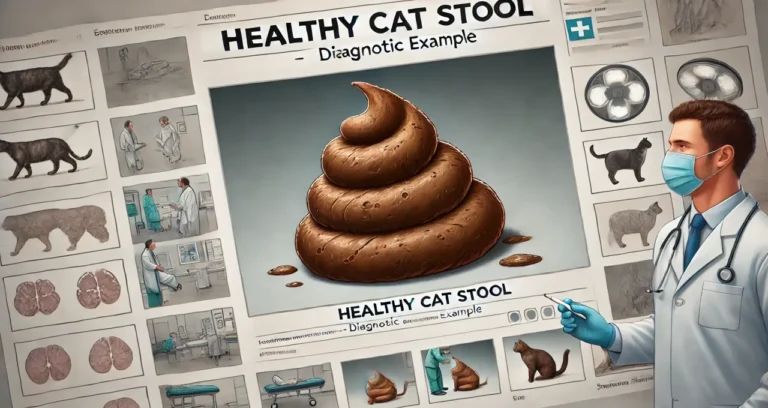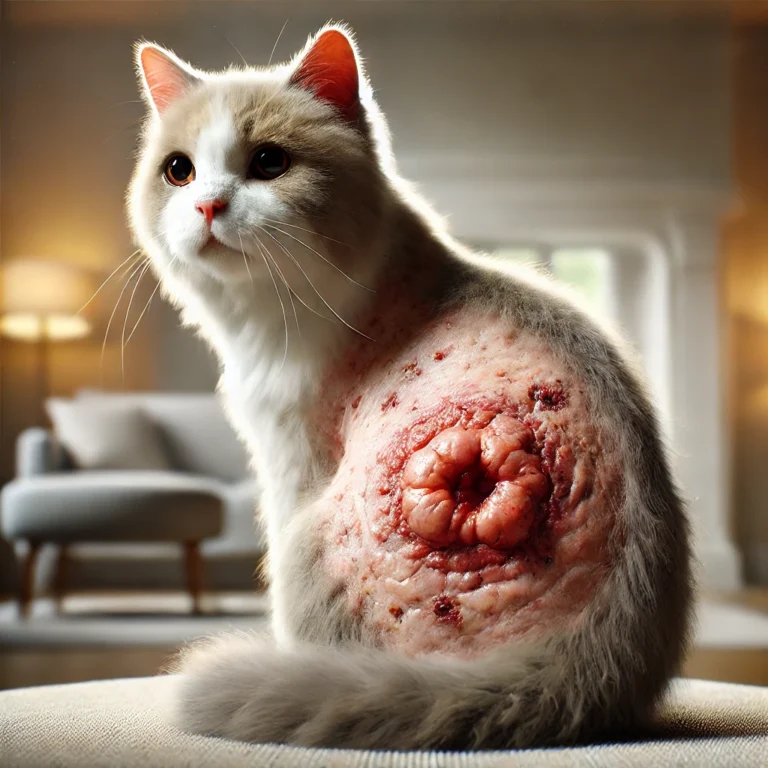Introduction to mange in cats

Mange is a skin disease in cats caused by various types of microscopic mites. These parasites can cause severe skin irritation, leading to symptoms such as itching, hair loss, and skin lesions. The condition, commonly referred to as feline mange, can range from mild to severe and requires prompt treatment to prevent further complications.
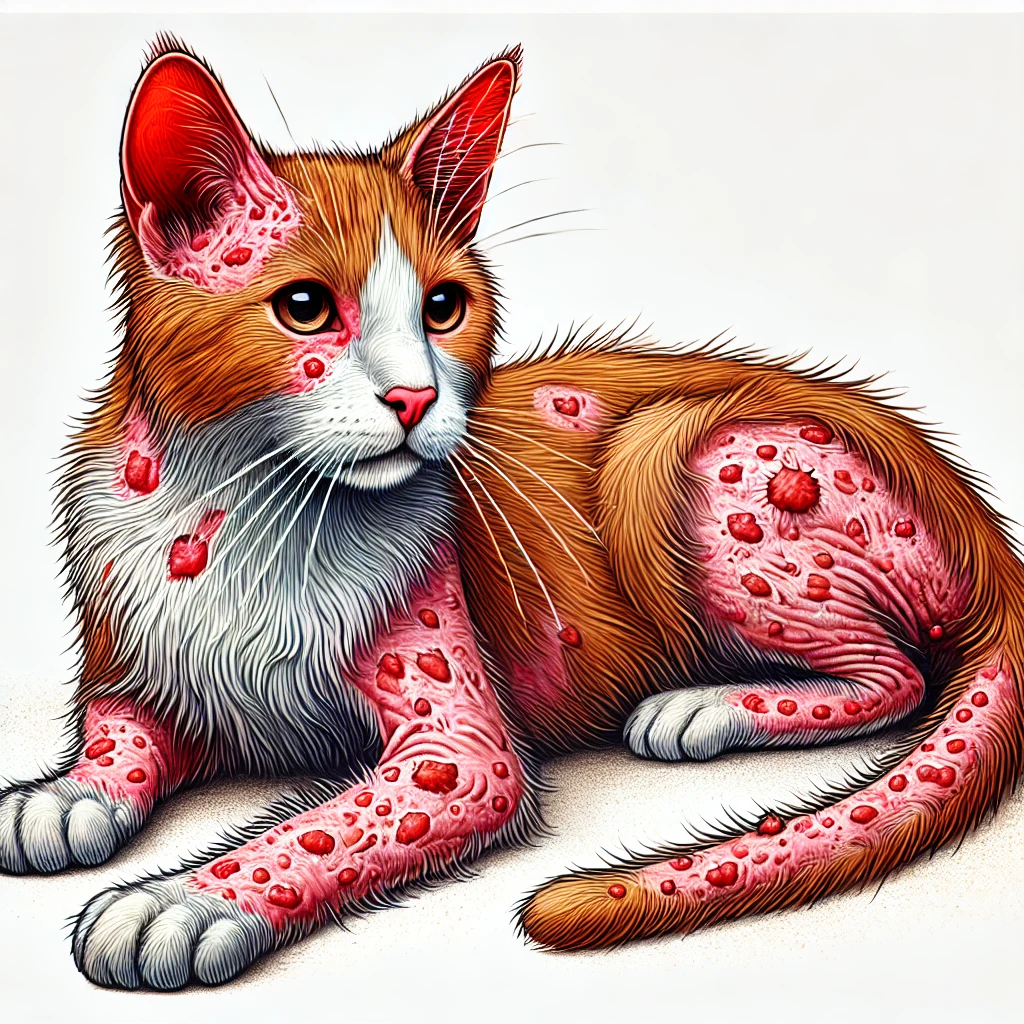
Understanding the Different Types of Mange in Cats
Sarcoptic Mange in Cats

- Causative Agent: Sarcoptes scabiei
- Transmission: Direct contact with infected animals
- Symptoms: Intense itching, red skin, hair loss, and crust formation
Notedric Mange in Cats
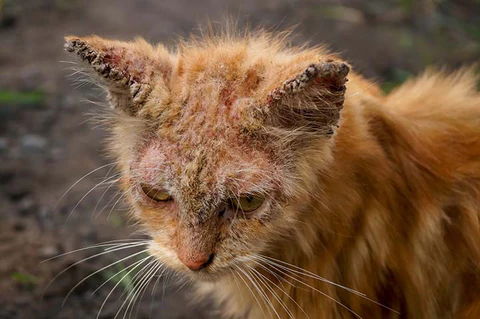
- Causative Agent: Notoedres cati, similar to the mite that causes scabies in humans
- Symptoms: Scaly skin, crusts, and hair loss, especially around the ears and face
Demodectic Mange in Cats
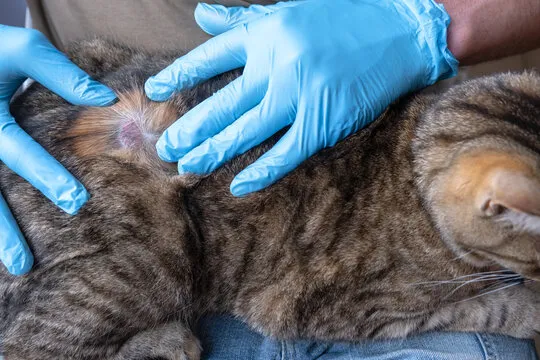
- Causative Agent: Demodex mites
- Transmission: Typically non-contagious, with mites passed from mother to kittens
- Symptoms: Hair loss, scaly skin, and sometimes itching
Cheyletiellosis in Cats
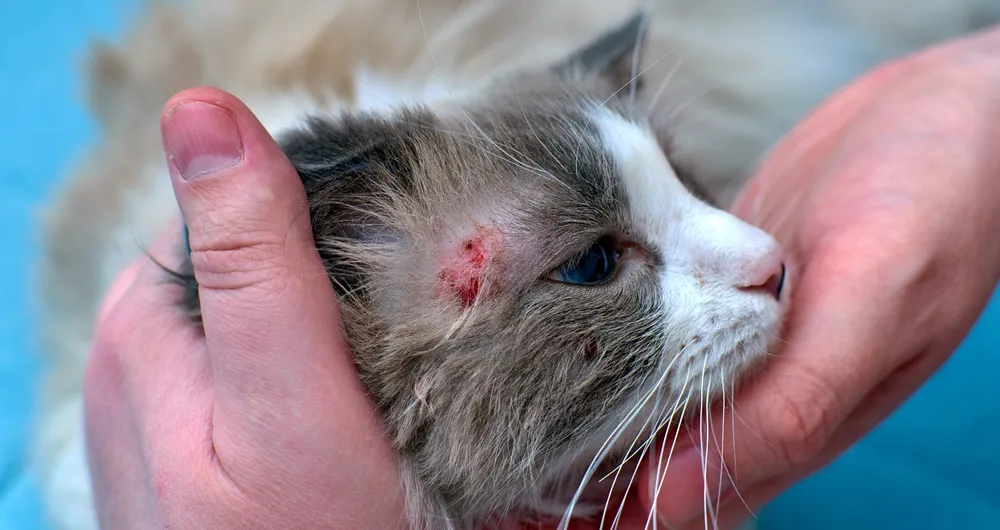
- Causative Agent: Cheyletiella mites
- Commonly Known As: Walking dandruff
- Symptoms: Scaling, flaking skin, and itching
A summary of Types of Mange in cats and Their Characteristics
| Type of Mange in cats | Mite Species | Symptoms | Contagious? |
|---|---|---|---|
| Sarcoptic | Sarcoptes scabiei | Intense itching, hair loss | Yes |
| Notedric | Notoedres cati | Hair loss, scaly skin | Yes |
| Demodectic | Demodex spp. | Hair loss, mild itching | No |
| Cheyletiellosis | Cheyletiella spp. | Flaking skin, mild itching | Yes |
Recognizing the Symptoms of Mange in Cats
Symptoms of mange in cats can vary depending on the type of mite responsible but commonly include:
- Intense scratching and licking
- Visible hair loss in patches
- Reddened skin, sometimes with a rash
- Scaly or crusty skin
tips
How much to feed a cat? In case of illness of a cat its owner should know calories required to a cat per day.
Diagnostic Approaches for Mange in Cats
Diagnosing mange involves several steps to ensure accurate identification of the mite species:
Clinical Examination
A thorough physical exam focusing on signs of mange, such as hair loss and skin lesions.
Diagnostic Tests
- Skin Scraping: Collecting skin samples to look for mites under a microscope.
- Fecal Examination: Checking fecal matter for mite eggs.
Treatment Options for Mange in Cats
Medications
- Topical Treatments: Mite-killing creams and shampoos.
- Oral Medications: Antiparasitic drugs if the infection is severe.
Home Care
- Regular cleaning and disinfection of the cat’s environment.
- Bathing the cat with medicated shampoos as prescribed.
| Medication Type | Brand Names | Purpose |
|---|---|---|
| Topical Ointments | Brand A, Brand B | Kill mites |
| Oral Medications | Medication C, Medication D | Treat severe cases |
Preventive Measures and Home Remedies for Mange in Cats
Preventive Measures
- Regular veterinary check-ups.
- Minimizing contact with stray animals.
Home Remedies
- Regular grooming.
- Boosting the cat’s immune system with a healthy diet.
| Home Remedy | Description | Expected Benefit |
|---|---|---|
| Herbal Shampoos | Aloe vera, neem oil | Soothe skin, reduce itching |
Do you know?
Cleaning of cat ears is an impactful way of reducing potential chances of mange in cats.
Impact of Mange on Cat Health and Longevity
Untreated mange can lead to severe health issues, including secondary infections, chronic skin problems, and potential systemic illness. Prompt and effective treatment is crucial for the health and longevity of cats suffering from mange.
Comprehensive Management of Mange in Cats
Managing mange effectively involves a combination of medical treatment, home care, and preventive strategies to ensure cats recover fully and live comfortably without recurring issues.
Conclusion on mange in cats
Mange in cats is a treatable condition when addressed with appropriate care and preventive measures. Understanding the types, symptoms, and treatment options allows cat owners to better manage their pet’s health and prevent the spread of this irritating condition. Regular veterinary visits and good hygiene are key to keeping your feline friends healthy and mange-free.
How do you get rid of mange on a cat?
To get rid of mange, you need to consult a veterinarian who can prescribe appropriate treatments such as topical medications, oral medications, or injections that specifically target the type of mites causing the mange. Regular bathing with medicated shampoos can also help alleviate symptoms.
How can you tell if a cat has mange?
Signs of mange in cats include excessive scratching, visible hair loss, particularly in patches, red and inflamed skin, and sometimes the appearance of scabs or crusts. A vet can confirm mange through skin scrapings examined under a microscope.
Can humans catch mange from cats?
Some types of mange, like sarcoptic mange (scabies), can be transmitted to humans from animals, including cats, but the mites typically do not survive long on human skin. Not all types of mange are contagious to humans.
What is the fastest way to cure mange?
The fastest way to cure mange is through aggressive veterinary treatment. This often includes the use of lime-sulfur dips and prescription medications that kill the mites quickly. Consistent treatment and following your vet’s directions are crucial for rapid recovery.
Can vaseline treat mange?
Vaseline or petroleum jelly can help soothe the skin and protect affected areas, but it is not a cure for mange. It can trap mites and their eggs on the skin, potentially worsening the situation. It’s important to use treatments specifically recommended by a veterinarian.
Can mange spread to humans?
Mange caused by sarcoptic mites can spread to humans, resulting in a temporary skin reaction. However, human-specific treatment is usually simple, as these mites cannot reproduce on human skin and typically die off quickly.
Can you touch an animal with mange?
It is safe to touch an animal with mange, but precautions should be taken, especially with sarcoptic mange, which can cause temporary itching and rashes in humans. Wearing gloves and washing hands after handling can minimize the risk of transmission.
Does mange go away on its own?
Mange does not typically go away on its own. Without treatment, symptoms can persist and worsen over time, potentially leading to more severe health issues and discomfort for the animal.
Can mange cause blindness?
While mange itself does not directly cause blindness, severe infestations around the eyes can lead to secondary infections or damage that could potentially impact the eyesight if not treated promptly.


